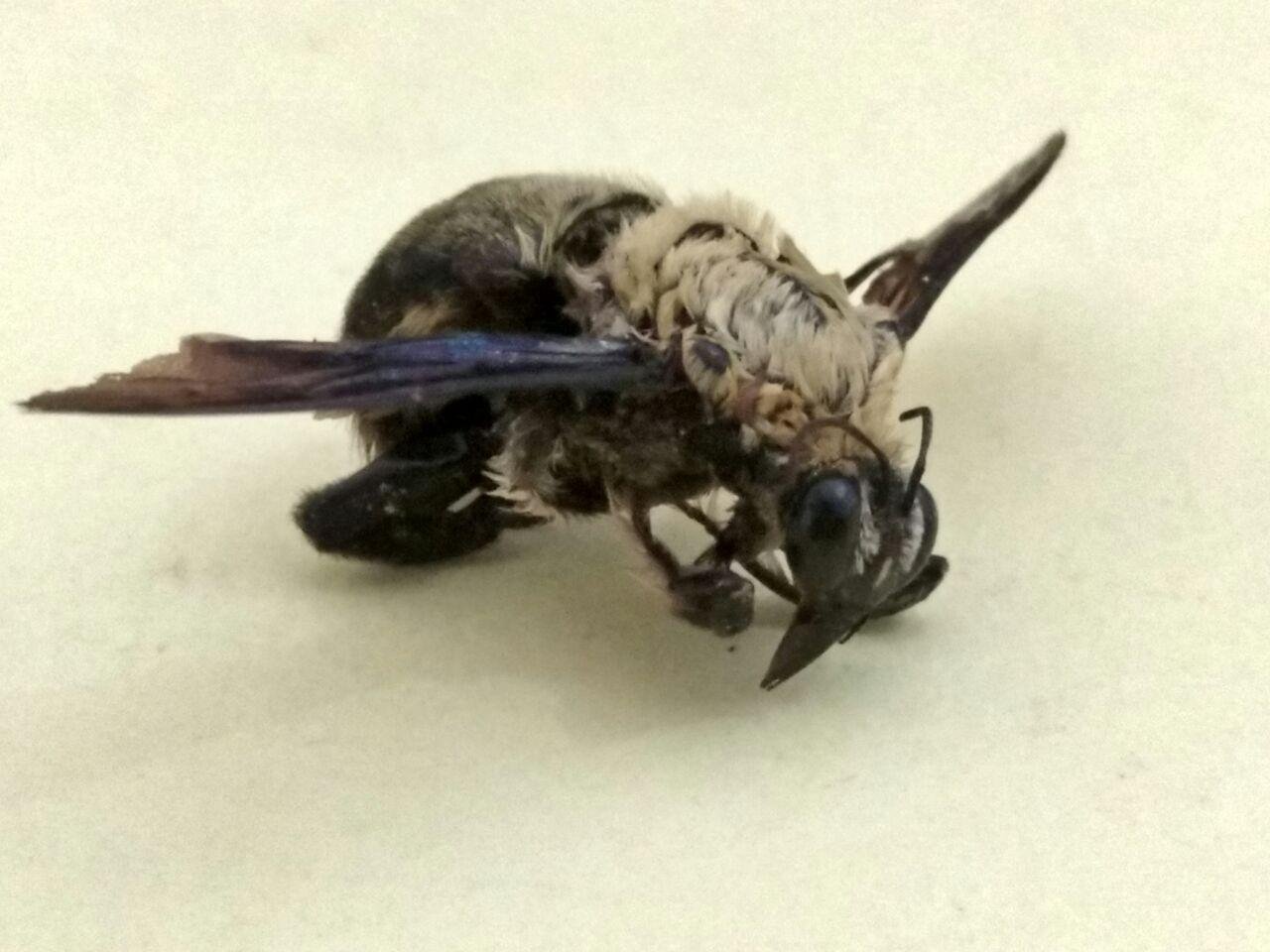Bumblebees usually have a hairy abdomen with black and yellow stripes the bees also have different nesting habitsbumblebees nest in an existing cavity often underground eg in abandoned rodent burrows whereas carpenter bees tunnel into wood to lay their. If the suspicious bee does in fact go into a wood portion of your home our best bee trap will help you safely and easily remove the carpenter bees and prevent damage to the wood.
A black carpenter bee will most likely nest within the wood of your home while a bumble bee will go underground.

Black wood bee. Carpenter bees do not eat wood but do feed on plant pollen and nectar. The eastern carpenter bee is similar to most other bee species in that it does not have a queen. These are usually in the eaves of homes as well as in decks siding fascia boards or porches.
Chat with one of our experts today. Unfinished or weathered wood attracts the robust black and yellow carpenter bee. The common name carpenter bee derives from their nesting behavior.
14 to 1 colors. While the pests do not eat wood they excavate tunnels to use as nests. It is much smaller for the small bees.
Carpenter bees bore a round hole into soft wood. Most of the top of the abdomen of carpenter bees is without hairs and is shiny black in color. You can differentiate the two by examining the dorsal upper side of the abdomen.
Once the hole is about an inch deep the bee then turns its boring to follow the grain of the wood and create a tunnel initially about 6 to 8 inches in length. Carpenter bees are species in the genus xylocopa of the subfamily xylocopinaethe genus includes some 500 bees in 31 subgenera. They nest in various types of wood and eat pollen and nectar.
For large carpenter bees the hole is about 12 inch in diameter. Carpenter bees resemble bumblebees but typically have a shiny hairless abdomen. If its shiny and hairless its a carpenter bee.
Carpenter bees burrow in exposed wood to make nestscarpenter bees get their name from their ability to drill through wood and nest in it. The best way to get rid of carpenter bees involves a 2 step treatment plan to easily get rid of these pests. In xylocopa virginica females are responsible for reproduction foraging and nest construction though they may sometimes have help from their daughters.
A bumblebee by contrast has a hairy abdomen. Their drilling will create a nearly perfect hole approximately 12 inch in diameter. If you see a number of large bees hovering near the eaves of the house or drilling in wood you have carpenter bees.
By contrast the abdomen of bumblebees is fully clothed with hairs many of them yellow in color. Nearly all species burrow into hard plant material such as dead wood or bamboo. Carpenter bees genus xylocopa are solitary bees that burrow into wood.
Carpenter bees have a blue black green or purple metallic sheen with a shiny relatively hairless abdomen. Find out how to perfectly time the treatment and the exact steps to get rid of and keep wood bees away.